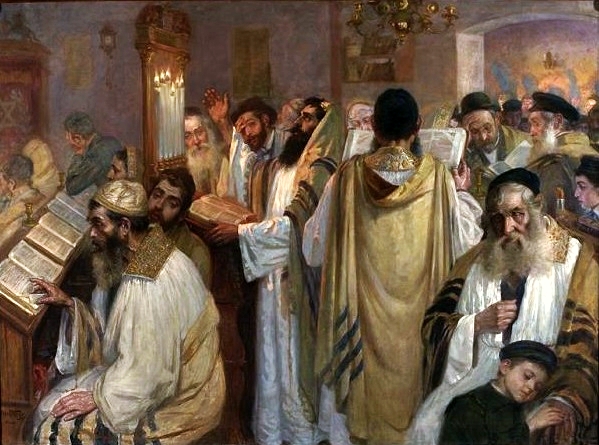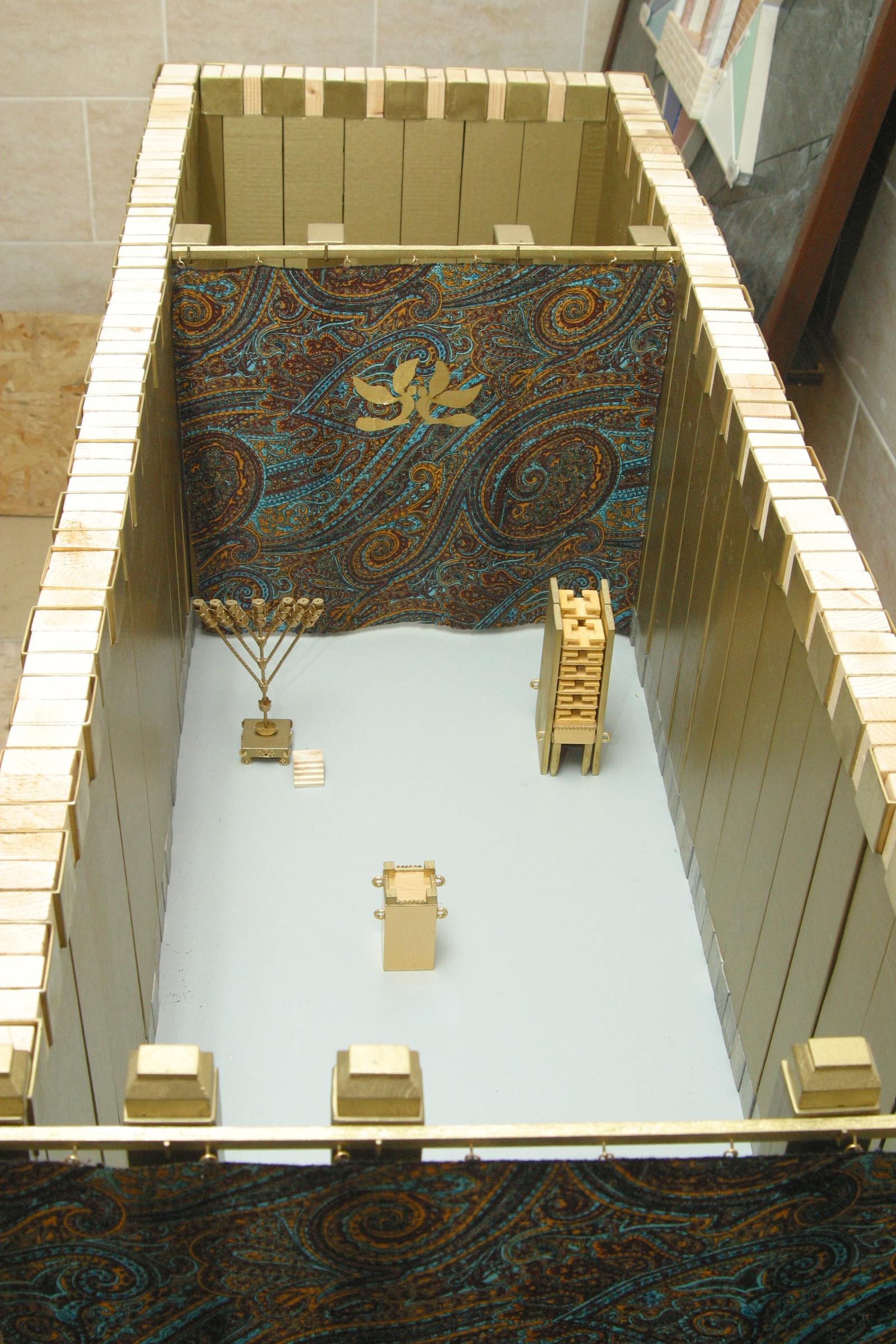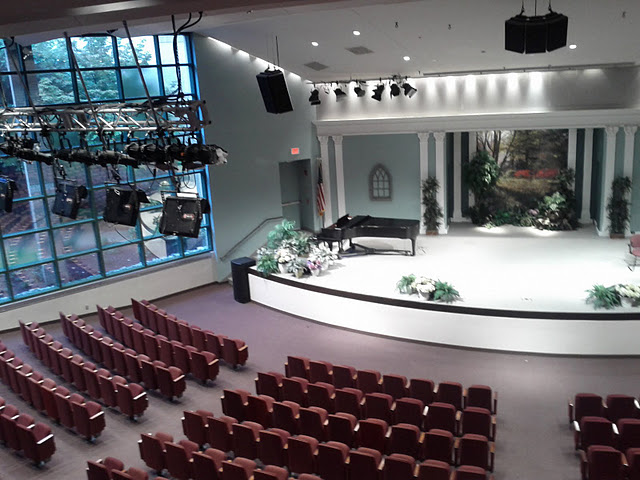|
Investigative Judgment
The investigative judgment, or pre-Advent Judgment (or, more accurately the pre-Second Advent Judgment), is a unique Seventh-day Adventist doctrine, which asserts that the divine judgment of professed Christians has been in progress since 1844. It is intimately related to the history of the Seventh-day Adventist Church and was described by one of the church's pioneers Ellen G. White as one of the pillars of Adventist belief. It is a major component of the broader Adventist understanding of the "heavenly sanctuary", and the two are sometimes spoken of interchangeably. Outline of the Doctrine Biblical basis Seventh-day Adventists believe that texts such as Hebrews 8:1- 2 teach that the two-compartment design of the earthly sanctuary built by Moses, was in fact a model patterned after the Heavenly Sanctuary "which the Lord set up, not man." Hebrews 8:2 (NASB). They believe that statements in as well as statements found in Hebrews chapters 8 and 9, reveal that Christ entered the f ... [...More Info...] [...Related Items...] OR: [Wikipedia] [Google] [Baidu] |
Seventh-day Adventist Church
The Seventh-day Adventist Church is an Adventist Protestant Christian denomination which is distinguished by its observance of Saturday, the seventh day of the week in the Christian (Gregorian) and the Hebrew calendar, as the Sabbath, and its emphasis on the imminent Second Coming (advent) of Jesus Christ. The denomination grew out of the Millerite movement in the United States during the mid-19th century and it was formally established in 1863. Among its co-founders was Ellen G. White, whose extensive writings are still held in high regard by the church. Much of the theology of the Seventh-day Adventist Church corresponds to common evangelical Christian teachings, such as the Trinity and the infallibility of Scripture. Distinctive post-tribulation teachings include the unconscious state of the dead and the doctrine of an investigative judgment. The church places an emphasis on diet and health, including adhering to Kosher food laws, advocating vegetarianism, and its ... [...More Info...] [...Related Items...] OR: [Wikipedia] [Google] [Baidu] |
Yom Kippur
Yom Kippur (; he, יוֹם כִּפּוּר, , , ) is the holiest day in Judaism and Samaritanism. It occurs annually on the 10th of Tishrei, the first month of the Hebrew calendar. Primarily centered on atonement and repentance, the day's observances consist of full fasting and ascetic behavior accompanied by intensive prayer as well as sin confessions (traditionally inside of a synagogue). Alongside the related holiday of Rosh HaShanah, Yom Kippur is one of the two components of the "High Holy Days" of Judaism. Etymology () means "day" in Hebrew and () is translated to "atonement". The common English translation of Yom Kippur is Day of Atonement; however, this translation lacks precision. The name Yom Kippur is based on the Torah verse, "...but on the 10th day of the seventh month it is the day of ''kippurim'' unto you..." The literal translation of ''kippurim'' is cleansing. Yom Kippur is a Jewish day to atone for misdeeds and become cleansed and purified from the ... [...More Info...] [...Related Items...] OR: [Wikipedia] [Google] [Baidu] |
Milton Hook
Milton Raymond Hook (born 1939) is a Seventh-day Adventist religion educator, author and church historian. He is an honorary research fellow at Avondale College, New South Wales, Australia. Biography Hook was born in Perth, Western Australia, and attended North Inglewoodwebsite and Bickleywebsite elementary schools before entering Carmel College in Perth and Kent Street Senior High School, finishing with six credits including three distinctions. During 1958 and 1959 he was a trainee schoolteacher at Manjimup and Victoria Park before proceeding to Avondale College, New South Wales, where he completed the Elementary Teachers Certificate (1961) and a Bachelor of Arts (1964). He was president of his graduation class. Further studies were taken at the Evangelical Lutheran Seminary in Ohio (now Trinity Lutheran Seminary), and Andrews University in Michigan, graduating with a Master of Arts and Doctor of Education (1978). With the encouragement of his advisor, Hook wrote ''Flames O ... [...More Info...] [...Related Items...] OR: [Wikipedia] [Google] [Baidu] |
Pre-advent Judgment
In Christian theology, the pre-advent judgment is a belief that the Last Judgment will occur before the Second Coming (or "Advent") of Jesus.Investigating the Judgement Anderson, J. T. 2003. Retrieved: 04/05/18 This concept stands in contrast to the much more common Christian belief that the Last Judgment will occur at or after the second coming. Interpretations The believes that a pre-advent judgment started in the year 1844,[...More Info...] [...Related Items...] OR: [Wikipedia] [Google] [Baidu] |
Shut-door Theology
Shut-door theology was a belief held by the Millerite group from 1844 to approximately 1854, some of whom later formed into the Seventh-day Adventist Church. It held that as William Miller had given the final call for salvation, all who did not accept his message were lost. The door of salvation was shut, hence the term "shut door". They later understood it was concerning the sanctuary and not the events on earth so abandoned their earlier understanding. As an interpretation of the year "1844", it was connected to the investigative judgment belief, which forms one of the official 28 Fundamentals beliefs today. History After the disappointment of 1844, the Millerites held a Conference in 1845 in Albany, attended by 61 delegates, to determine the future course and meaning of the Millerite movement. Following this meeting, the "Millerites" then became known as "Adventists" or "Second Adventists". Four groups emerged from the conference: The Evangelical Adventists, The Life and A ... [...More Info...] [...Related Items...] OR: [Wikipedia] [Google] [Baidu] |
Second Coming
The Second Coming (sometimes called the Second Advent or the Parousia) is a Christian (as well as Islamic and Baha'i) belief that Jesus will return again after his ascension to heaven about two thousand years ago. The idea is based on messianic prophecies and is part of most Christian eschatologies. Terminology Several different terms are used to refer to the Second Coming of Christ: In the New Testament, the Greek word ἐπιφάνεια (''epiphaneia'', appearing) is used five times to refer to the return of Christ. The Greek New Testament uses the Greek term ''parousia'' (παρουσία, meaning "arrival", "coming", or "presence") twenty-four times, seventeen of them concerning Christ. However, parousia has the distinct reference to a period of time rather than an instance in time. At parousia is used to clearly describe the period of time that Noah lived. The Greek word ''eleusi''s which means "coming" is not interchangeable with parousia. So this parousia or "p ... [...More Info...] [...Related Items...] OR: [Wikipedia] [Google] [Baidu] |
Smuts Van Rooyen
Smuts is an Afrikaans surname most commonly associated with Jan Smuts (1870–1950), a South African statesman, military leader and prime minister of the Union of South Africa. Other notable people with the surname include: * Barbara Smuts, American anthropologist * Dave Smuts, Namibian Supreme Court judge * Dene Smuts (1949–2016), South African politician * Ginter Smuts (born 1998), South African rugby union player * JJ Smuts (born 1988), South African cricketer *J. J. L. Smuts (1785–1869), South African public official * John Christopher Smuts (1910–1979), known as Christopher Smuts, South African-born British politician * Kelly Smuts (born 1990), South African cricketer * Lulama Smuts Ngonyama (born 1952), known as Smuts Ngonyama, South African politician * Neil Smuts (1898–?), South African aviator * Olive Smuts-Kennedy (1925–2013), New Zealand politician See also * Smut (other) Smut may refer to: * Smut (fungus), a group of plant parasitic fungi * ''Smu ... [...More Info...] [...Related Items...] OR: [Wikipedia] [Google] [Baidu] |
Holy Of Holies
The Holy of Holies (Hebrew: ''Qōḏeš haqQŏḏāšīm'' or ''Kodesh HaKodashim''; also הַדְּבִיר ''haDəḇīr'', 'the Sanctuary') is a term in the Hebrew Bible that refers to the inner sanctuary of the Tabernacle, where God's presence appeared. According to Hebrew tradition, the area was defined by four pillars that held up the veil of the covering, under which the Ark of the Covenant was held above the floor. According to the Hebrew scripture, the Ark contained the Ten Commandments, which were given by God to Moses on Mount Sinai. The Temple in Jerusalem was said to have been built by King Solomon for keeping the Ark. Ancient Jewish traditions viewed the Holy of Holies as the spiritual junction of Heaven and Earth, the "axis mundi". As a part of the Jewish Temple in Jerusalem, the Holy of Holies was situated somewhere on Temple Mount; its precise location in the Mount being a matter of dispute, with some classical Jewish sources identifying its location with the ... [...More Info...] [...Related Items...] OR: [Wikipedia] [Google] [Baidu] |
Adult Bible Study Guide
Sabbath School is a function of the Seventh-day Adventist Church, Seventh Day Baptist, Church of God (Seventh-Day), some other sabbatarian denominations, usually comprising a song service and Bible study lesson on the Sabbath. It is usually held before the church service on Saturday morning, but this may vary. It includes programs that are Bible based, to foster Christian growth. This period usually lasts for a period of 1 hour 40 minutes. During this time the "lesson study" is also conducted. Activities Sabbath School usually begins at 9:30am or 10:30am on Saturday mornings before the worship service starts. The Sabbath School service for adults typically has two portions. The first portion begins with a song service, followed by a mission emphasis and a short talk. The second, and larger portion, is the lesson study. Different churches conduct Sabbath School in many ways, mostly teaching on the same topic or reading in a given week, as each quarter of the year has a differe ... [...More Info...] [...Related Items...] OR: [Wikipedia] [Google] [Baidu] |
Biblical Research Institute
The General Conference Corporation of Seventh-day Adventists is the governing organization of the Seventh-day Adventist Church. Its headquarters is located in Silver Spring, Maryland and oversees the church in directing its various divisions and leadership, as well as doctrinal matters. The General Conference, which is overseen by an executive committee and an elected President of the General Conference, is the administrative head of the global church. The denomination is organized in a representative form of church government, which means authority arises from the membership of local churches. In addition to administering their own congregations, churches send representatives to vote on matters and leaders in a shared local unit of administration. They vote also on who will represent them in a large area, with further representation selected at each successively larger administrative region. Finally, the General Conference elects the executive committee and officers who hold it ... [...More Info...] [...Related Items...] OR: [Wikipedia] [Google] [Baidu] |
Seventh-day Adventists Answer Questions On Doctrine
''Seventh-day Adventists Answer Questions on Doctrine'' (generally known by the shortened title ''Questions on Doctrine'', abbreviated ''QOD'') is a book published by the Seventh-day Adventist Church in 1957 to help explain Adventism to conservative Protestantism, Protestants and Evangelicals. The book generated greater acceptance of the Adventist church within the evangelicalism, evangelical community, where it had previously been widely regarded as a cult. However, it also proved to be one of the most controversial publications in Adventist history and the release of the book brought prolonged alienation and separation within Adventism and evangelicalism. Although no authors are listed on the title of the book (credit is given to "a representative group" of Adventist "leaders, Bible teachers and editors"), the primary contributors to the book were Le Roy Edwin Froom, Walter E. Read, and Roy Allan Anderson (sometimes referred to as "FREDA"). In Adventist culture, the phrase ''Q ... [...More Info...] [...Related Items...] OR: [Wikipedia] [Google] [Baidu] |
Year-day Principle
The year principle, year principle or year-for-a-day principle is a method of interpretation of Bible prophecy in which the word ''day'' in prophecy is considered to be symbolic of a ''year'' of actual time. It was the method used by most of the Reformers, and is used principally by the historicist school of prophetic interpretation. It is held by the Seventh-day Adventist Church, Jehovah's Witnesses, and the Christadelphians. The day-year principle is also used by the Baháʼí Faith, as well with by most all astrologers who employ the "Secondary Progression" theory, aka the day-for-a-year theory, wherein the planets are moved forwards in the table of planetary motion (known as an ephemeris) a day for each year of life or fraction thereof. The astrologers say that the four seasons of the year are directly spiritually, phenomenologically like the four "seasons" of the day. Biblical basis Proponents of the principle, such as the Seventh-day Adventists, claim that it has three pr ... [...More Info...] [...Related Items...] OR: [Wikipedia] [Google] [Baidu] |




